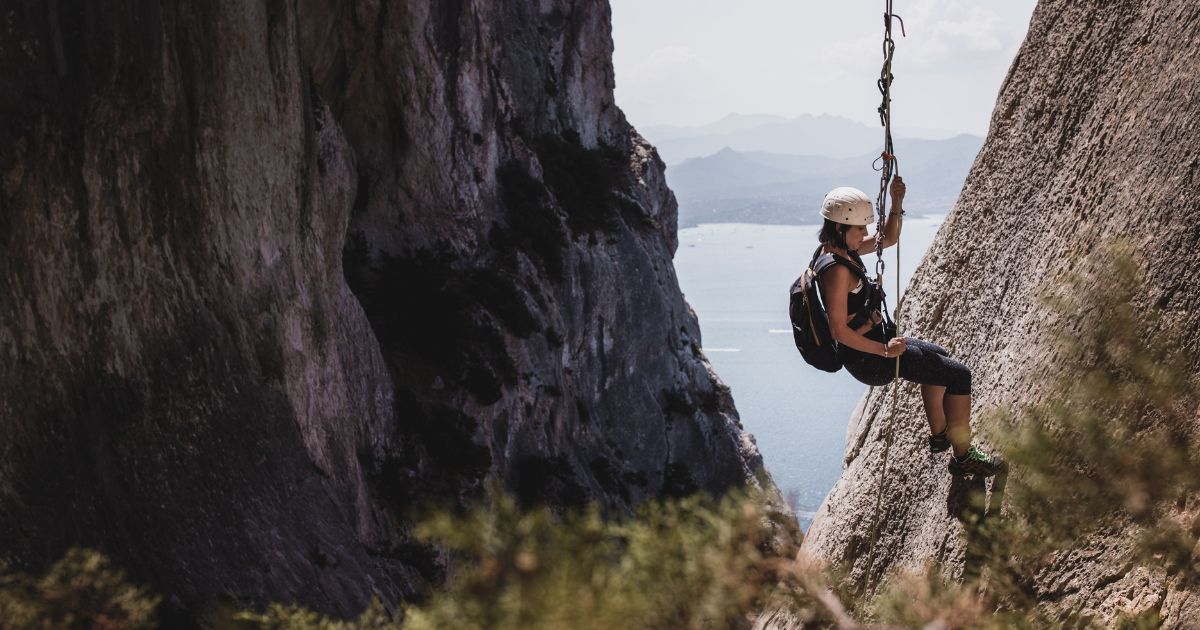Table of Contents
How to Belay: The Ultimate Guide to Belaying
The ability to belay is one of the most important skills needed for the thrilling sport of rock climbing. By securing the climber’s harness, you can protect them from falls. We’ll explore belaying techniques in this extensive guide, with a particular emphasis on the tube-style device. This article covers everything from setup to lowering the climber, so it’s perfect for beginners and experienced climbers alike.
Understanding the Importance of Belaying
The belayer’s skill at handling the rope determines the safety of rock climbing. Belaying is the most important climbing skill because it guarantees that the climber won’t hit the ground if they fall.
The belayer’s skill at handling the rope determines the safety of rock climbing. Belaying is the most important climbing skill because it guarantees that the climber won’t hit the ground if they fall.
Preparing to Belay
- Close the system. To prevent the climbers from inadvertently lowering themselves off the rope’s end, start by tying a stopper knot in the rope’s free end.
- Prepare the Belay Device: Insert the rope through the device, making sure the climber’s side is on top and the brake side is below. Using a locking carabiner that fits through both the device and your belay loop, secure it.
- Double-check the setup. Verify that the stopper knot is securely fastened, the rope is threaded through the device correctly, and the carabiner is locked. Make sure the climber is prepared and has their harness fastened correctly by having a conversation with them. You are prepared to start belaying as soon as everything is verified.
Safety Checks
Examine the setups of the climber and the belayer in detail, paying close attention to the carabiners, harnesses, and knots. Make sure the rope is securely locked and clipped.
Make sure that the climber and the belayer are aware of each other’s movements and are speaking clearly to each other. Make sure the anchor points are secure by checking them twice. Verify that there are no dangers in the climbing area. Above all, safety should always come first.
The Belaying Process
“On belay?” the climber asks before ascending, and the belayer replies, “Belay on.” “Climbing” and “Climb on” are used frequently to maintain clear communication throughout the ascent.
The belayer stays alert and concentrated while the climber ascends, prepared to pick up the slack or apply tension as necessary. Additionally, the belayer closely monitors the climber’s movements and provides assistance and direction as needed. A safe and successful climb depends on the climber and belayer maintaining constant communication and mutual trust.
Understanding the P.BUS Belay Method
- Guide Hand and Break Hand: Make sure your break hand is always on the rope. The climber’s side is where the guide’s hand remains.
- Pulling Slack: Use the guiding hand to pull the slack through and the break hand to feed it through the belay device.
- Keeping Motions Small: Consistently small movements keep the rope taut and avoid too much slack.
By ensuring a controlled and seamless belay, this technique enables the belayer to quickly and effectively pick up slack as the climber ascends. Belayers can ensure a safe and secure belay, protecting the climber at all times, by adhering to the P.BUS method. A successful P.BUS belay requires you to constantly communicate with your climbing partner and pay attention to their movements.
Responding to Climber Signals
It is important to comprehend signals such as “tension” and “following.”. The person belaying must pay close attention to the needs of the climber and modify the amount of slack as necessary.
Should the climber indicate “tension” while ascending, the belayer needs to be prepared to receive slack and release it when the climber indicates “following.” A safe and successful climb depends on the climber and belayer having continuous communication and responsiveness.
Lowering the Climber Safely
The climber gives the belayer a signal after reaching the summit. When lowering, the guiding hand passes beneath the break hand and feeds the rope through the belay device bit by bit until the climber lands safely.
By keeping a tight hold on the rope, the belayer helps the climber descend safely and smoothly. Clear cues and signals must be exchanged during this process between the climber and the belayer to guarantee a successful and safe descent. The belayer can ease the tension on the rope and get ready for the next climb once the climber is safely down on the ground.
Adjusting Descent Speed
The descender’s requests and the terrain will determine how quickly to descend, so the belayer must pay attention to the climber’s cues.
To guarantee that the climber descends safely and smoothly, the belayer must be alert and responsive. A safe and enjoyable rappelling experience depends on the climber and belayer cooperating and communicating with one another.
In summary:
Any rock climber must become proficient in the art of belaying. All the important points have been covered in this thorough guide, from setup to the P.BUS belay technique and safely lowering the climber. Remember, the traits of a proficient belayer are clear communication and continuous signal attention. Continue climbing, be safe, and have fun with the experience!
Related Posts
- The 7 Essential Movements of Bouldering
- The 5 Fundamentals of Climbing You Need to Know
- How To Improve Your Climbing Footwork? – 4 key Stages
- 8 Essential Tips for Outdoor Rock Climbing Beginners
- Best Upper Body Workout for Climbers
- 7 Techniques Every Climber Must Know
- Strength Training For Climbing
- Training Drills Every Climber Should Do
- How To Start Outdoor Climbing
- The 7 Best Climbing Shoes for Beginners
- 5 Best Bouldering Shoes
- Best Beginner Bouldering Shoes
- Moderate Rock Climbing Shoes – Your Ultimate Guide
- Aggressive Climbing Shoes: A Quick Guide for Every Climber










Discussion about this post